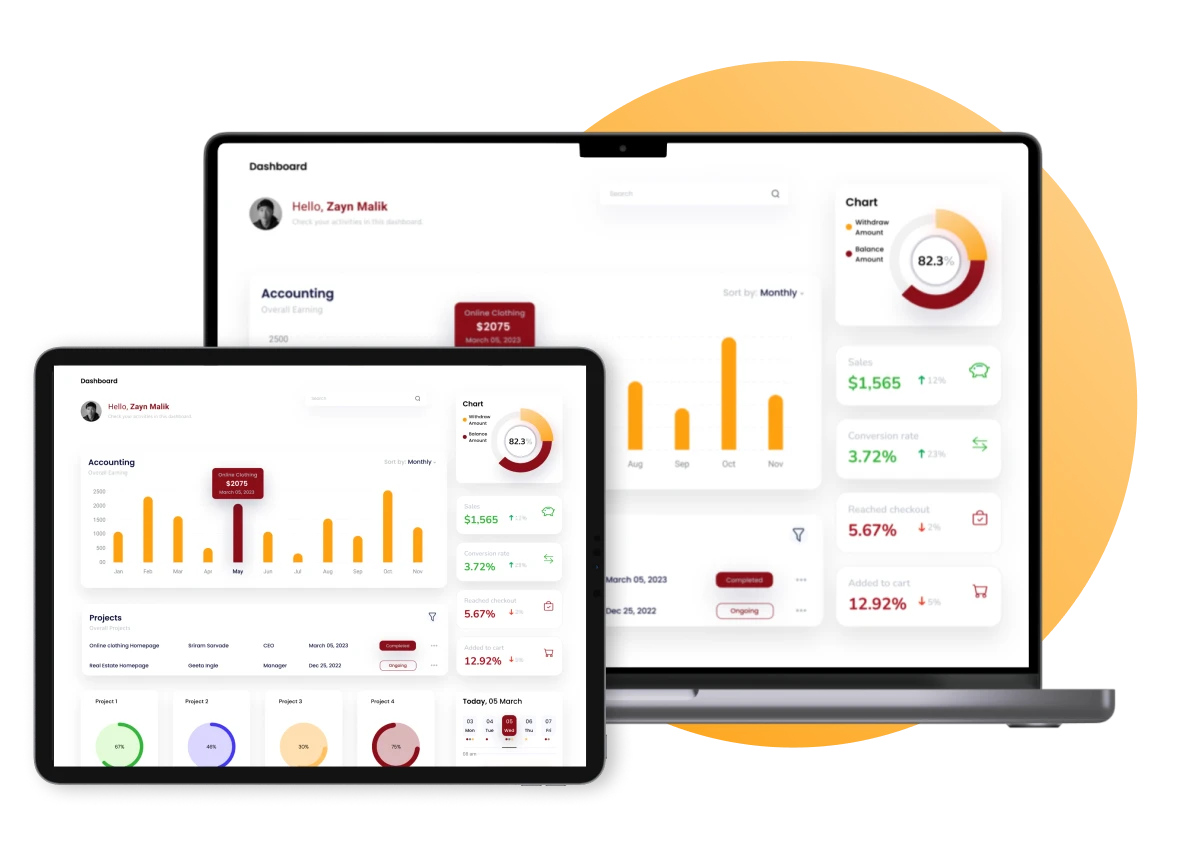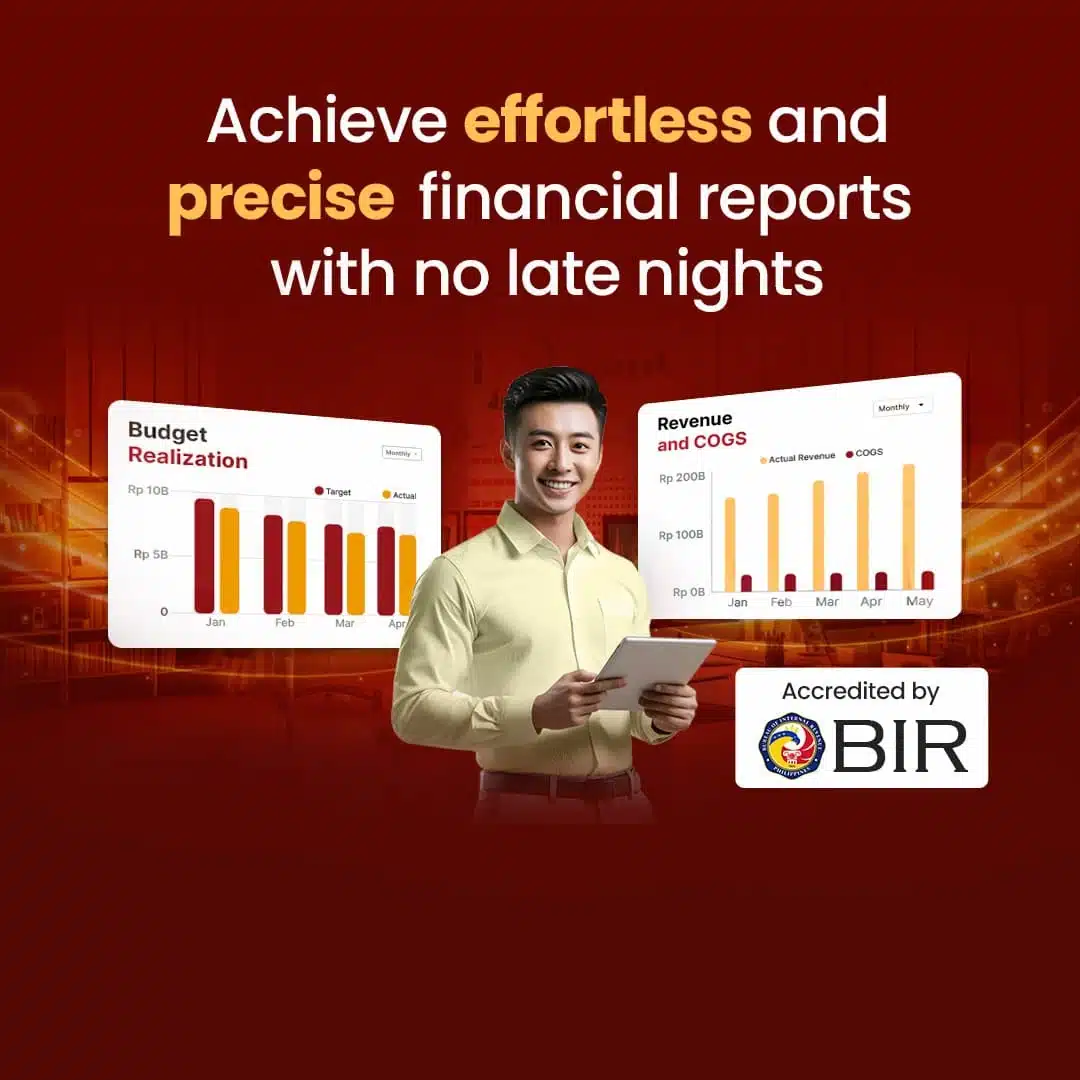Have you ever wondered how some restaurants thrive even during taghirap, while others struggle to keep their doors open? Often, the difference isn’t just the quality of the food or the charm of the staff but how well they manage their restaurant accounting.
Effective restaurant accounting helps make smart decisions about pricing and inventory control, ensuring every dish served helps increase your kita. Understanding the flow of money in and out of a restaurant is key.
Each element needs careful management, from payroll and supplier bills to daily sales and overhead costs. Managers can keep their finances healthy using accounting software in the Philippines and discover insights that drive growth and improve customer satisfaction.
Key Takeaways
|
Table of Content
Content Lists

What is Restaurant Accounting?

Restaurant accounting is crucial for managing a restaurant’s financial health through specialized practices. It involves detailed management of financial records and expense analysis tailored to the food industry. This process covers everything from monitoring daily sales and managing payroll to calculating COGS.
Effective restaurant accounting offers a clear view of a restaurant’s financial status, aiding in informed decision-making. By analyzing sales data, restaurants can optimize menu offerings and purchasing to maximize profitability. Expense tracking helps identify areas for cost reduction, enhancing operational efficiency.
Modern accounting software philippines automates these tasks, increasing accuracy and efficiency. It integrates with POS systems, capturing transactions in real time and streamlining payroll and inventory management.
How Restaurant Accounting Can Benefit Business
Proper accounting is vital for restaurant managers to grasp their real-time financial status, essential for navigating tight profit margins in the industry. It enhances pricing strategies, cost control, and complies with tax regulations. Here’s how adopting this technology can transform your restaurant’s financial health:
-
Enhanced Sales Insights
Understanding your customers better can significantly increase sales. Restaurant automation accounting software provides analytics to identify top customers and their buying patterns. Integrating this software with inventory management allows smart stock adjustments, boosting profit margins by optimizing what sells best.
-
Streamlined Financial Management
Restaurant accounting software goes beyond simple bookkeeping by saving time that can be used to enhance customer service. It captures detailed customer data such as enabling personalized services like sending birthday vouchers. This not only boosts customer satisfaction but also attracts more patrons.
-
Informed Spending and Risk Management
Before making major decisions such as hiring new staff or introducing new menu items, it’s vital to assess their financial impact. Restaurant accounting software allows for detailed financial reporting and forecasting, providing clarity on whether these decisions will bring financial stability or pose risks.
For larger restaurant chains, the complexity increases with multiple branches. Here, adopting a centralized accounting system is advantageous as it manages finances across all locations efficiently, minimizing errors like double entries, and providing real-time financial insights.
Must-Have Features of a Restaurant Accounting
Restaurant accounting extends beyond basic bookkeeping of managing revenues and expenses. It ensures detailed and effective decision-making for food service operations. Implementing restaurant management software enhances these processes, improving accuracy and operational efficiency.
Here are the key components of restaurant accounting, ensuring accurate financial management aligned with accounting principles. These include tracking sales, managing expenses, and monitoring inventory to maintain profitability and compliance with industry standards.
- Daily Sales Tracking: This involves recording each sale to monitor the restaurant’s revenue streams. It helps in understanding which menu items are performing well and which are not.
- Payroll Management: Restaurant accounting includes managing payroll for all employees. This ensures that all labor costs are accurately managed with budget allocations and legal requirements.
- Inventory Management: Keeping track of inventory is crucial in the restaurant industry to prevent overstocking or understocking. This part of accounting ties directly into the management of the cost of goods sold (COGS).
- Cost of Goods Sold (COGS): This is a calculation of all costs involved in producing the food and beverages sold by the restaurant. Restaurants can set prices that cover costs and generate a desired level of profit.
- Financial Health Analysis: Effective restaurant accounting provides a comprehensive picture of the restaurant’s financial status. This includes analysis of cash flow, profit margins, and other financial indicators essential to decision-making.
- Compliance and Reporting: This includes the proper documentation of all financial transactions and adherence to tax laws and other regulatory requirements.
Accounting helps manage daily financial tasks and supports strategic decisions. In restaurants, another way to better manage restaurant is to understand accounts payable, it ensures timely supplier payments, better cash flow, and cost savings.
Also read: 11 Types of Accounting You Need to Know (And How They Differ)
HashMicro’s Restaurant Accounting Software to Minimize Financial Errors

HashMicro’s Restaurant Accounting Software provides a robust solution to enhance operational efficiency and financial clarity. Designed specifically for the hospitality industry, this software streamlines critical aspects of financial management and integrates seamlessly with existing business processes.
Features of HashMicro’s Restaurant Accounting Software:
- Profit & Loss vs Budget & Forecast: This feature allows managers to compare financial outcomes to budgets and forecasts. It’s crucial for strategic adjustments and financial planning.
- Financial Statement with Budget Comparison: Restaurants can track how closely actual finances align with budgeted projections. Identifying discrepancies helps in adjusting strategies to maintain fiscal health.
- Treasury & Forecast Cash Management: This tool is essential for managing the cyclical nature of restaurant cash flows. It ensures liquidity to meet operational demands without interruption.
- Complete Financial Statements with Period Comparison: This feature enables financial performance analysis across different periods. It provides insights into trends and supports long-term strategic decision-making.
- Track profit per branch & categories: Monitor profit and loss per branch and category for financial clarity. Identify top-performing branches and categories to optimize business strategies.
- Automate bank reconciliation: Automate complex reconciliation processes with banking integrations. Save time and reduce errors, ensuring seamless financial record-keeping.
- Accurate costs of material: Learn about profit margins per product and sales to make informed decisions. Understand cost fluctuations to adjust pricing and maximize profitability.
Incorporating HashMicro’s Restaurant Accounting Software can significantly improve a restaurant’s ability to manage finances meticulously. This tool is not just a facilitator of basic accounting tasks but a strategic asset that enhances overall business performance.
Conclusion
Navigating the competitive restaurant industry demands not just great food but also sharp financial management. HashMicro’s Restaurant Accounting Software simplifies your financial operations, transforming daily tasks like payroll and inventory management into strategic insights. It provides the tools to swiftly adapt to market changes and plan for future growth.
Experience how tailored features can optimize operations and enhance profitability. Embrace the tools that empower you to thrive in the marketplace. Elevate your restaurant’s financial strategy with a free demo of HashMicro’s software, try it today!
Frequently Asked Questions
-
What is accounting in a restaurant?
Restaurant accounting involves tracking revenues, expenses, payroll, and inventory to maintain financial health. It helps in strategic decision-making by providing insights into profitability and operational efficiency.
-
What is the best accounting method for restaurants?
Restaurants typically use cash accounting for simplicity, tracking transactions when money changes hands. However, accrual accounting is better for larger restaurants with complex finances, providing more detailed financial insight.
-
Is a restaurant accounting cash or accrual?
Small restaurants often use cash accounting for immediate financial tracking. Larger establishments typically opt for accrual accounting, offering a more comprehensive financial overview.





































